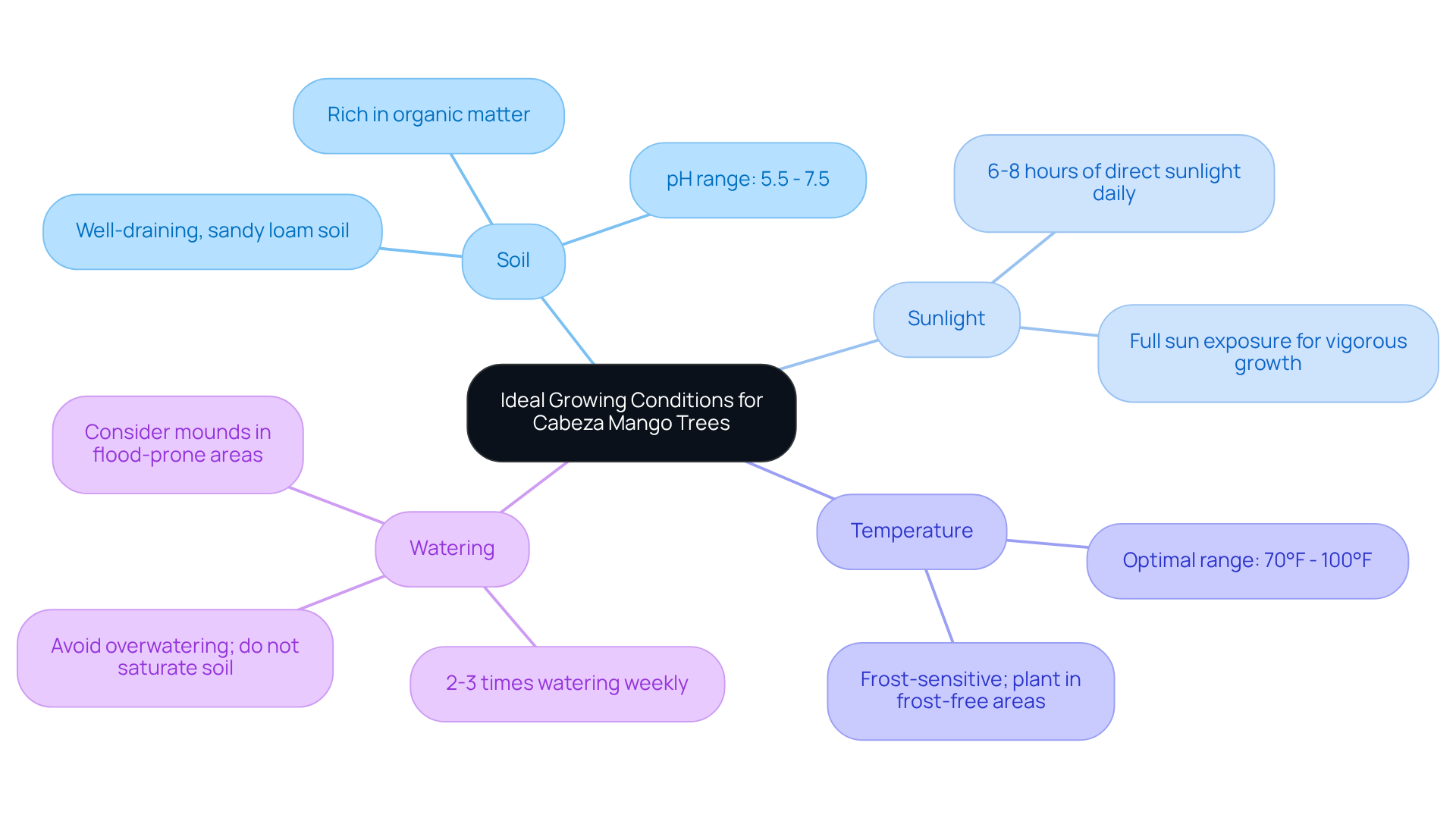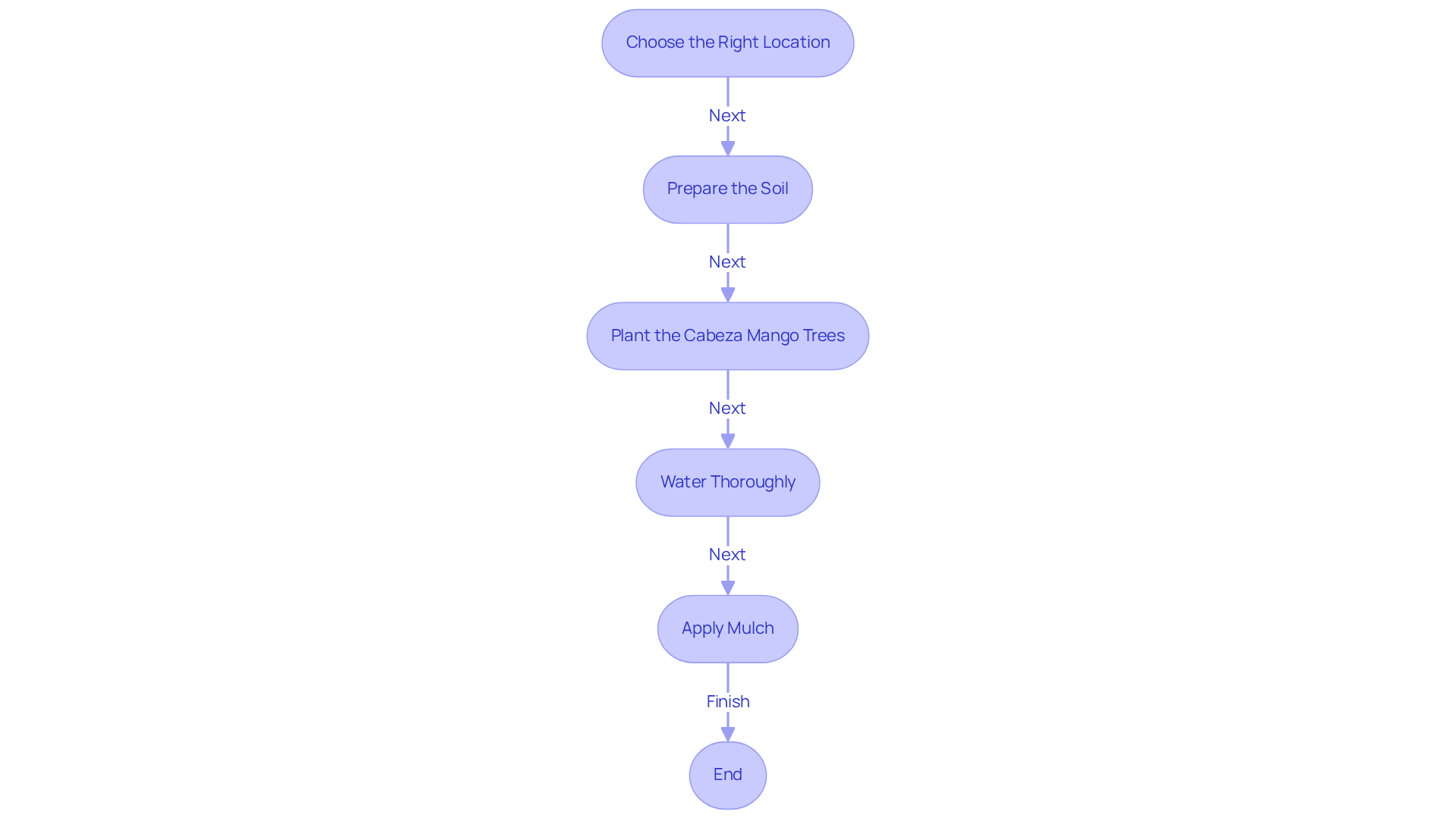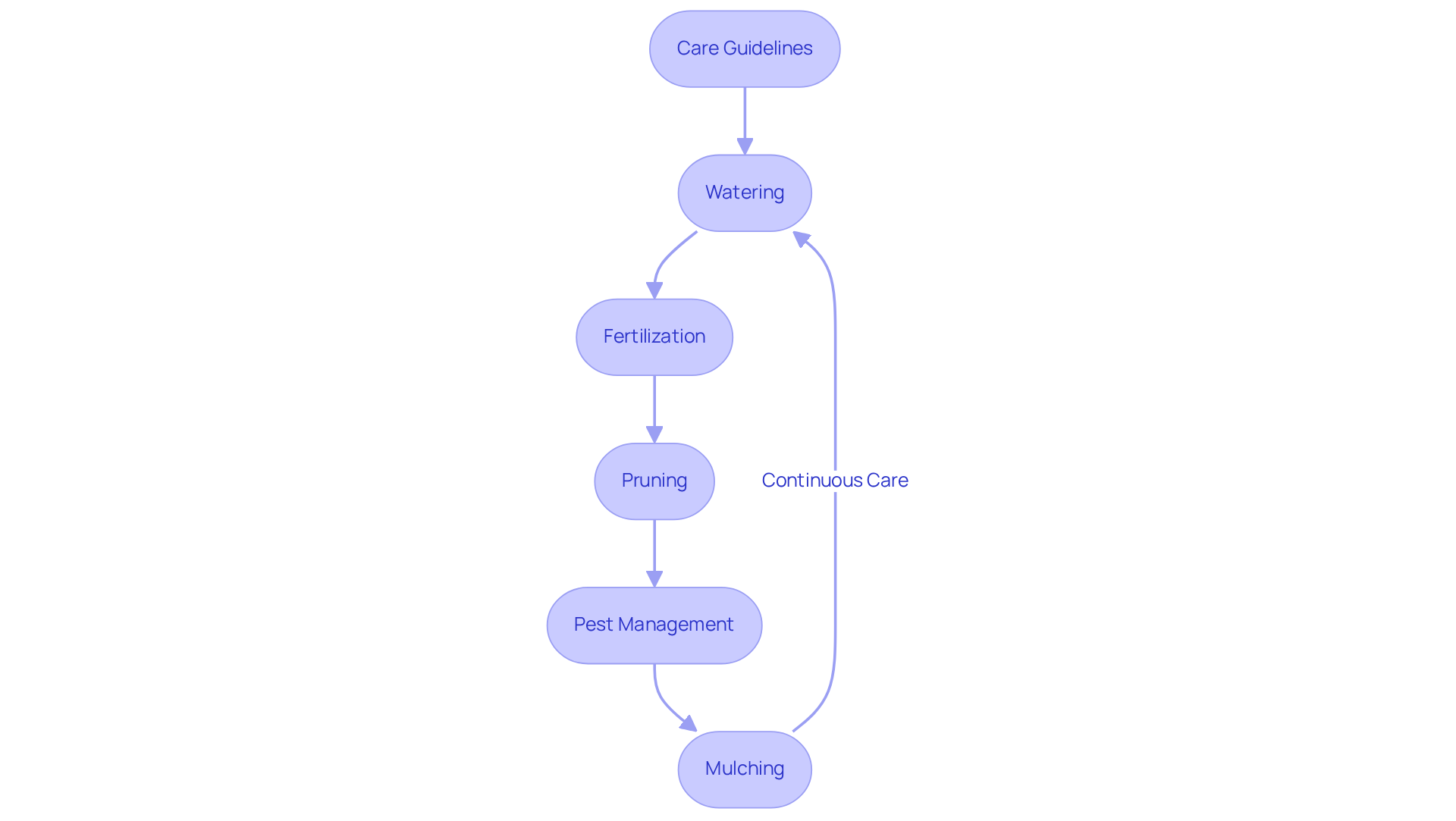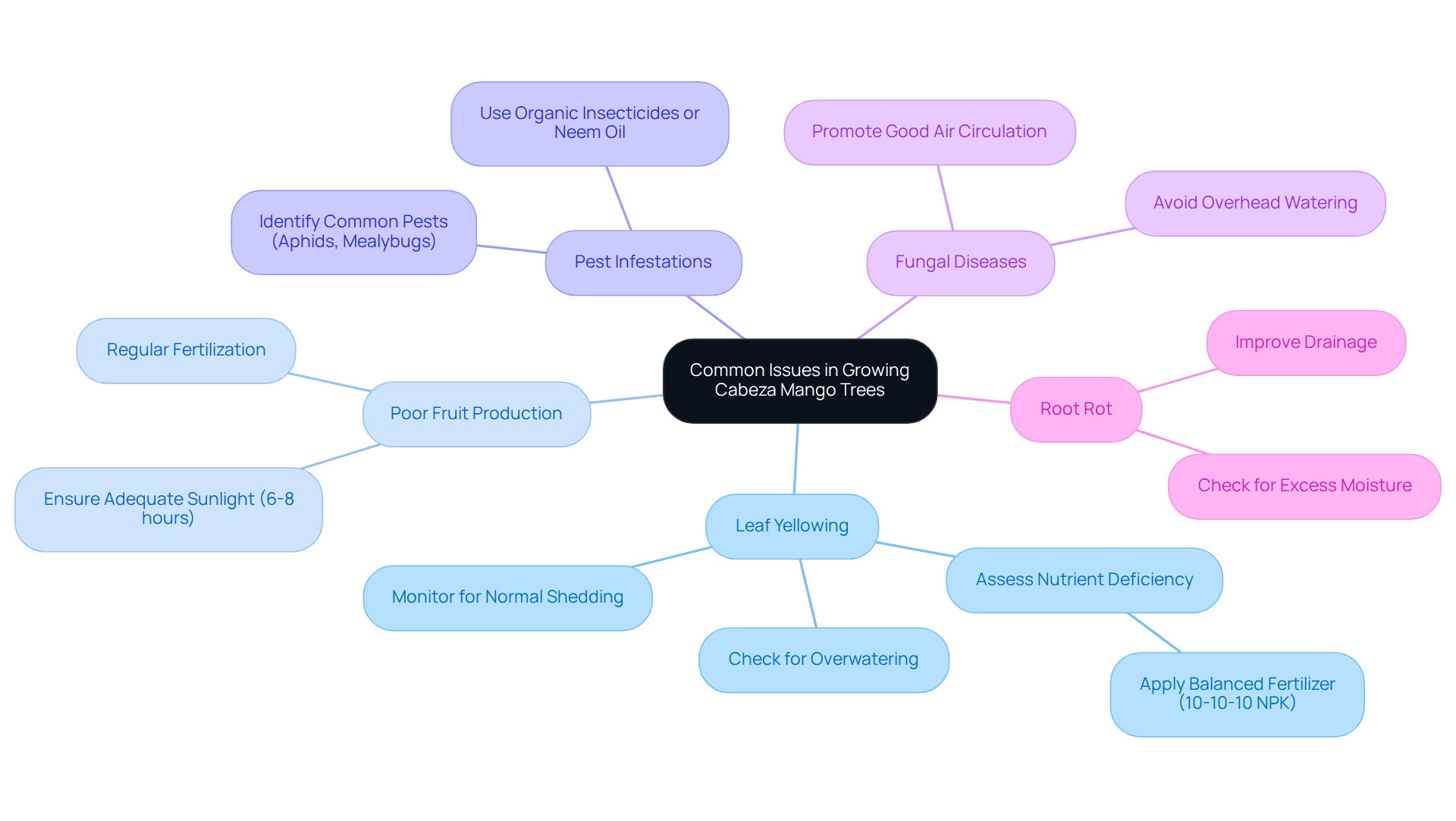Cultivating a thriving Cabeza mango tree can be a rewarding endeavor, requiring an understanding of specific environmental conditions and care techniques. This guide explores the essential steps for successfully growing these tropical treasures, from selecting the perfect location to troubleshooting common growth issues.
As gardeners embark on this journey, they may wonder about the key factors that can significantly impact the success of their mango cultivation. By delving into these intricacies, gardeners not only enhance their gardening experience but also look forward to the sweet reward of abundant fruit.
🥭 Want to grow Cabeza Mangos in your garden?
Explore Cabeza Mango in your garden at Everglades Farm - shipped directly from Florida.
1. Understand the Ideal Growing Conditions for Cabeza Mango Trees
Cabeza mango trees thrive in warm, tropical climates, requiring specific conditions for optimal growth. Understanding these key factors is essential for successful cultivation:
- Soil: Select well-draining soil rich in organic matter, ideally sandy loam. This type of soil promotes drainage while retaining necessary moisture. The ideal soil pH ranges from 5.5 to 7.5, facilitating healthy development.
- Sunlight: It is crucial for the plant to receive at least 6 to 8 hours of direct sunlight daily. Full sun exposure is vital for vigorous growth and abundant fruit yields.
- Temperature: These fruiting plants flourish in temperatures between 70°F and 100°F. Being frost-sensitive, it is important to plant them in areas that are free from frost.
- Watering: Regular watering is essential, particularly during dry spells. It is recommended to irrigate thoroughly two to three times a week, while avoiding overwatering, as these plants do not thrive in saturated soil. In regions susceptible to flooding, consider planting on mounds to enhance survival rates.
By exploring Everglades Farm's Fast-Growing Plants collection, you can discover a variety of tropical fruit options, including cabeza mango trees, designed for rapid yields and successful home gardening. By meeting these requirements, you can cultivate a healthy and productive mango variety.

2. Step-by-Step Guide to Planting Your Cabeza Mango Tree
To successfully plant your Cabeza mango tree, follow these essential steps:
-
Choose the Right Location: Select a sunny area in your garden that is sheltered from strong winds. It is crucial to ensure the site has excellent drainage to prevent waterlogging.
-
Prepare the Soil: Dig a hole that is twice as wide and deep as the root ball of your fruit plant. Enrich the excavated soil by mixing it with compost, which enhances fertility and provides the necessary nutrients for cabeza mango trees.
-
Plant the cabeza mango trees: Position the cabeza mango trees in the center of the hole, making sure the top of the root ball is level with the surrounding soil. Carefully fill the hole with the prepared soil mixture, gently packing it down to eliminate any air pockets that could hinder root growth.
-
Water Thoroughly: After planting, water the plant deeply to help settle the soil around the roots. It is important to maintain soil moisture without allowing it to become waterlogged, as this can lead to root rot.
-
Apply Mulch: Add a layer of mulch around the base of the plant to retain moisture and suppress weed development, which can compete for nutrients.
As Liberty Hyde Bailey wisely said, "A garden requires patient labor and attention." By following these steps, you will establish a solid foundation for your fruit plant, encouraging healthy growth and abundant yields. Remember, sourcing healthy plants is crucial for successful gardening. At Everglades Farm, we take pride in providing quality tropical fruit plants with outstanding packaging and service, ensuring that your gardening experience is both rewarding and productive.

3. Maintain and Care for Your Cabeza Mango Tree for Optimal Growth
To ensure your Cabeza mango tree thrives, it is essential to adhere to the following care guidelines:
-
Watering: Establish a consistent watering routine, particularly during dry periods. Aim for deep watering once a week, allowing the top inch of soil to dry out between sessions. In the initial two months after planting, water twice a week, then reduce to weekly watering for the next two months. Young mango plants require water every 1-2 weeks for the initial few years to aid their development.
-
Fertilization: Apply a balanced fertilizer specifically formulated for cabeza mango trees every 6-8 weeks throughout the growing season. This practice provides essential nutrients that foster strong development and fruit production.
-
Pruning: Conduct annual pruning to shape your cabeza mango trees and eliminate any dead or diseased branches. This practice not only promotes healthy development but also improves air circulation, which lowers the risk of disease.
-
Pest Management: Regularly inspect your cabeza mango trees for common pests like aphids and mealybugs. Employ organic insecticides or neem oil to effectively manage any infestations.
-
Mulching: Maintain a layer of mulch around the base of the cabeza mango trees to conserve moisture and suppress weed growth. Refresh the mulch as necessary to ensure continued effectiveness.
When planting cabeza mango trees, ensure the top of the root ball sits slightly above ground level to prevent water pooling. Additionally, clear grass and weeds within 2-3 feet of the planting zone to protect the young plant.
By adhering to these upkeep methods, you will nurture a thriving and fruitful variety of tropical fruit, bringing the pleasure of cultivation to your garden.

4. Troubleshoot Common Issues in Growing Cabeza Mango Trees
Here are some common issues you may encounter while growing Cabeza mango trees and effective strategies to address them:
- Leaf Yellowing: This condition may indicate overwatering, nutrient deficiency, or even normal leaf shedding. To ensure proper drainage and nutrient levels, consider applying a balanced fertilizer, such as a 10-10-10 NPK mix, every 6-8 weeks during the growing season.
- Poor Fruit Production: If your plant is not yielding fruit, it may not be receiving adequate sunlight or nutrients. Ensure it gets at least 6-8 hours of sunlight daily and fertilize regularly to support robust growth.
- Pest Infestations: Be vigilant for signs of pests like aphids or mealybugs. Treat infestations promptly with organic insecticides or neem oil to prevent damage to your plants.
- Fungal Diseases: Mango plants can be susceptible to diseases such as anthracnose. To minimize humidity around the leaves, ensure good air circulation and avoid overhead watering.
- Root Rot: If the plant wilts despite adequate watering, check for root rot caused by excessive moisture. This issue is particularly concerning for young fruit-bearing plants. Allow the soil to dry out and improve drainage if necessary.
Additionally, applying mulch around the base of the plant can help retain moisture and suppress weeds, contributing to overall plant health.
By being proactive and addressing these common issues, you can ensure the health and productivity of your cabeza mango trees.

Conclusion
Successfully cultivating Cabeza mango trees necessitates a comprehensive understanding of their specific requirements and meticulous attention to their care. By adhering to the outlined steps and guidelines, gardeners can establish an environment conducive to healthy growth and abundant yields. The journey—from selecting the optimal location to addressing common challenges—is essential for ensuring that these tropical trees flourish.
Key insights underscore the significance of optimal growing conditions, including:
- Well-draining soil
- Sufficient sunlight
- Appropriate watering practices
Furthermore, ongoing maintenance through fertilization, pruning, and pest management is crucial for nurturing these trees. Proactively addressing common issues can significantly enhance the health and productivity of your mango trees.
Ultimately, cultivating Cabeza mango trees not only provides the joy of gardening but also rewards you with delightful fruit. Embrace the process, stay attentive to your plants' needs, and relish the sweet success born from your dedication. With the right knowledge and commitment, anyone can cultivate a thriving mango garden that exemplifies their hard work and passion.
Frequently Asked Questions
What are the ideal growing conditions for Cabeza mango trees?
Cabeza mango trees thrive in warm, tropical climates with specific requirements, including well-draining soil, full sun exposure, appropriate temperatures, and regular watering.
What type of soil is best for Cabeza mango trees?
The best soil for Cabeza mango trees is well-draining and rich in organic matter, ideally sandy loam. The ideal soil pH ranges from 5.5 to 7.5.
How much sunlight do Cabeza mango trees need?
Cabeza mango trees require at least 6 to 8 hours of direct sunlight daily for vigorous growth and abundant fruit yields.
What temperature range is optimal for growing Cabeza mango trees?
These trees flourish in temperatures between 70°F and 100°F. They are frost-sensitive and should be planted in areas free from frost.
How often should Cabeza mango trees be watered?
Regular watering is essential, especially during dry spells. It is recommended to irrigate thoroughly two to three times a week while avoiding overwatering.
What should be done in areas prone to flooding when planting Cabeza mango trees?
In regions susceptible to flooding, it is advisable to plant Cabeza mango trees on mounds to enhance their survival rates.





0 comments